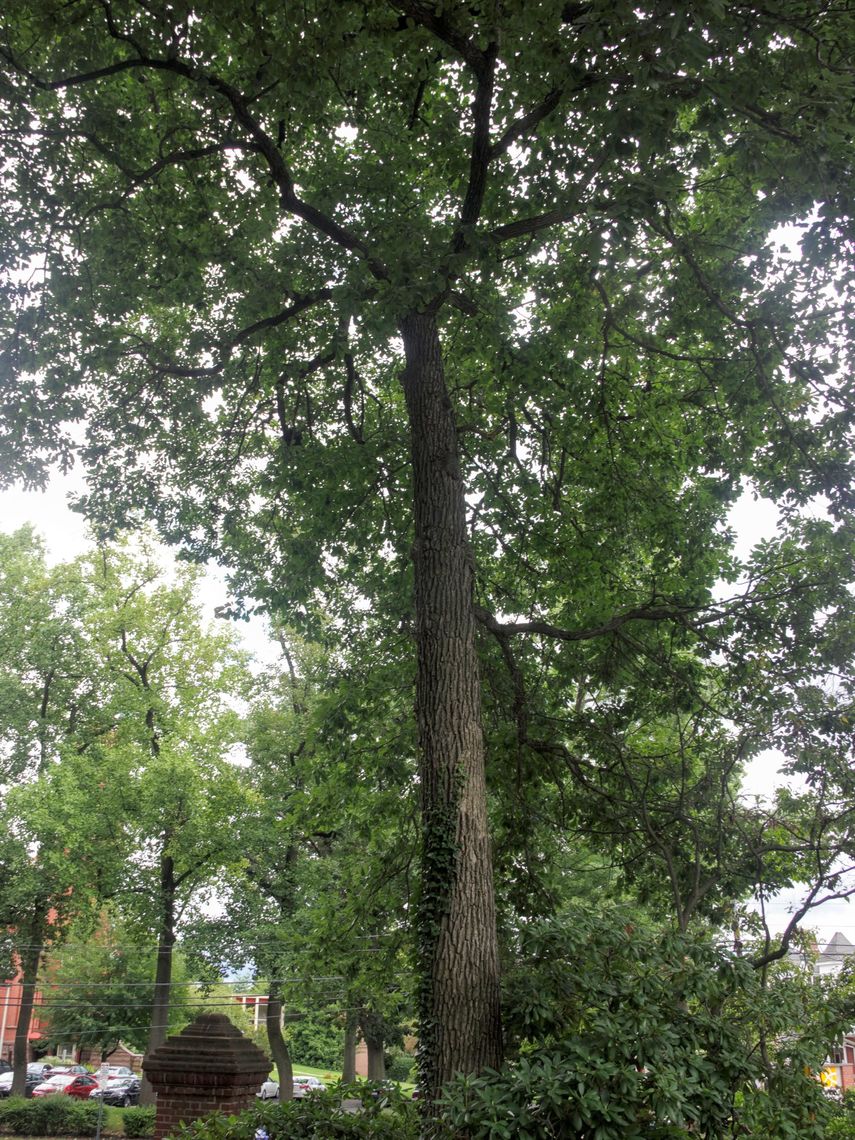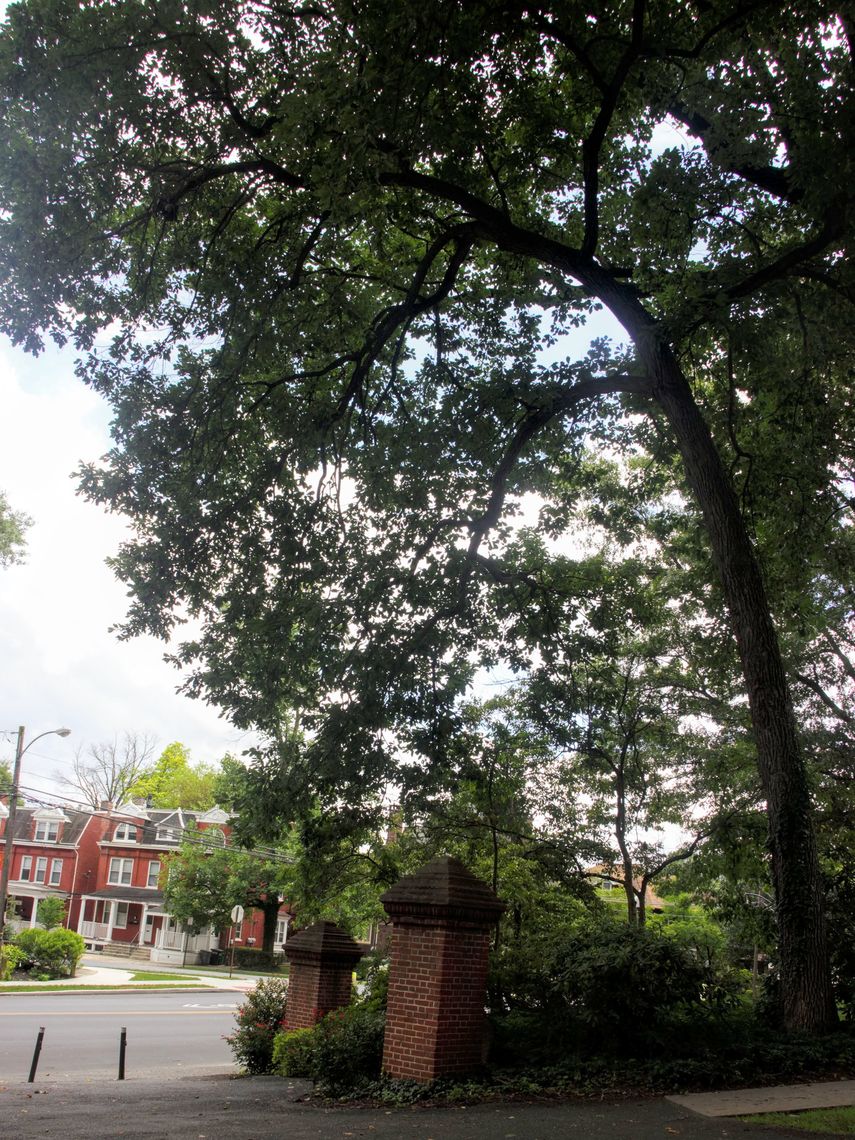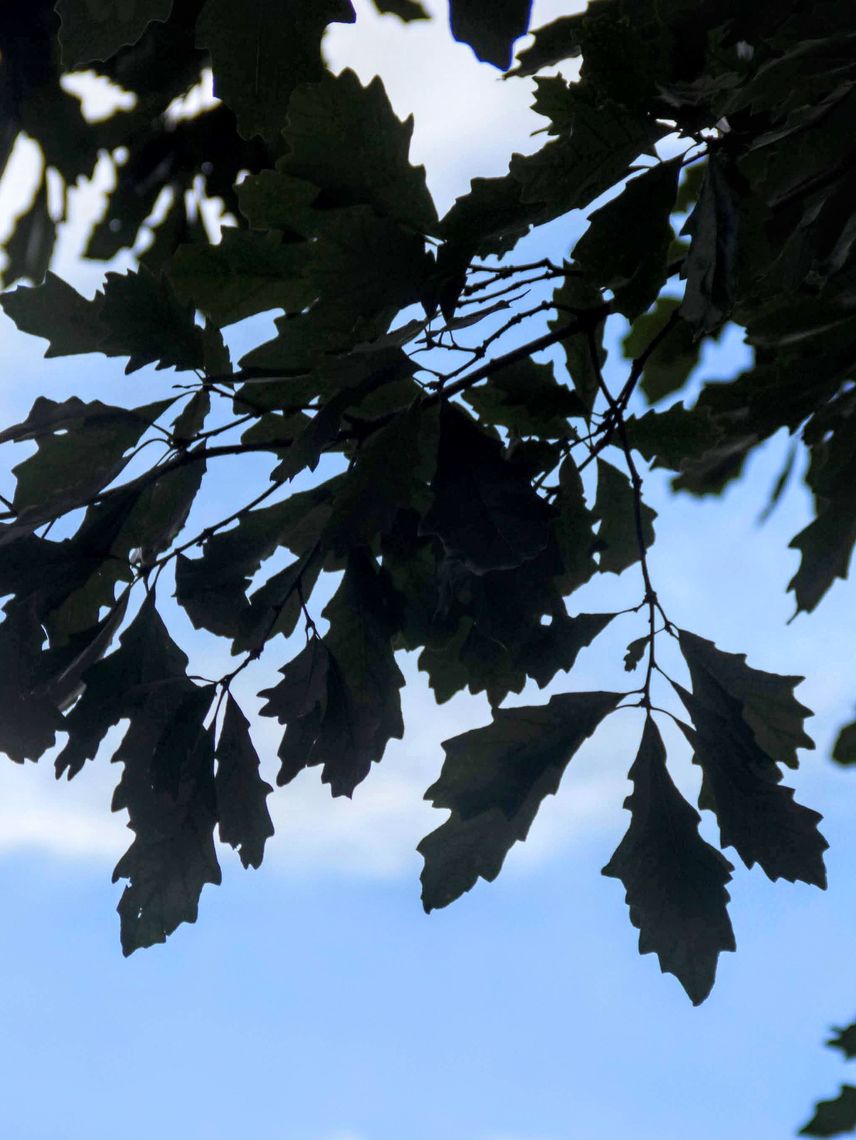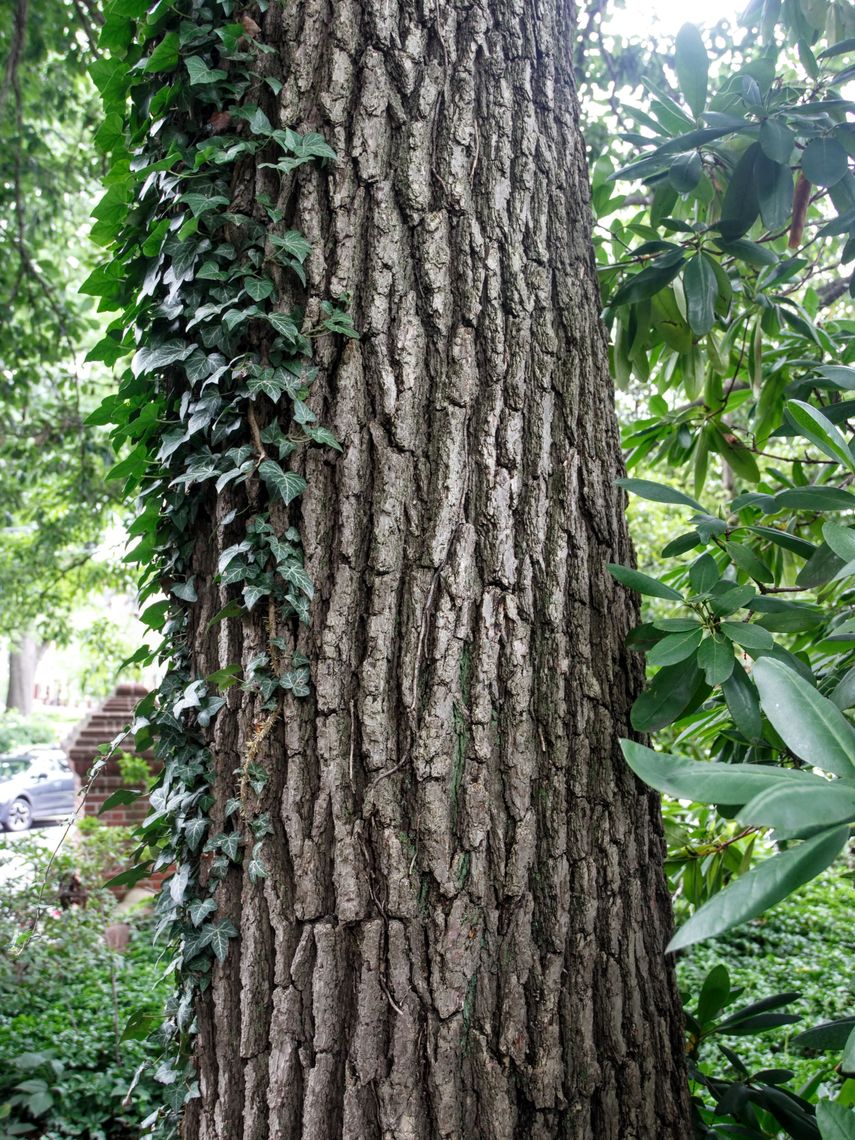Bur Oak (Quercus macrocarpa)
The bur oak has large, dark green leaves that have silvery-green undersides. These leaves have 5-7 rounded lobes and the middle lobe is usually deeply indented toward the stem of the leaf. Some say this makes the leaves look fiddle-like. The tree's acorns are also unique, since they are almost completely covered by a mossy cap. This tree attracts birds and mammals.
Family: Fagaceae (Beech)
Characteristics: The 6-inch to 12-inch-long leaves have 5-7 rounded lobes and are dark green with silver-green undersides. The middle lobes are usually deeply indented toward the stem of the leaf, giving it a waisted look. In the fall, leaves turn yellow-brown. This tree produces insignificant yellow-green flowers that appear as catkins. Acorns are almost fully covered by fringed caps. Bark is gray-brown and becomes deeply ridged with age. This tree has a massive trunk, a broad spreading and rounded crown, and stout branches. It grows 70-80 feet high and wide.
Foliage: Deciduous (leaves lost seasonally)
Geographic Origin: Northern and central United States, southeastern Canada (native)
Cultivation Notes: Requires low maintenance. Does best in full sun. Prefers alkaline, dry to medium moist, and well-drained soils. It has a good drought tolerance. This tree may be difficult to transplant, and it may take up to 35 years for it to begin producing acorns.
Number on Campus: 4
Sources: Dirr, Morton Arboretum, Missouri Botanical Garden




